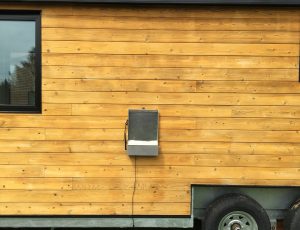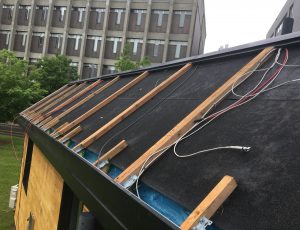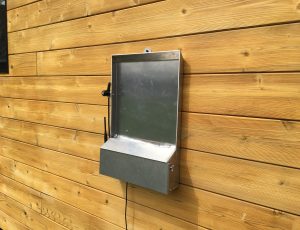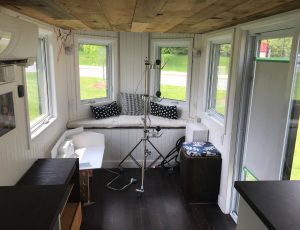Researcher: Chris Campbell
The goal of studying the Northern Nomad is to determine the impact of energy recovery ventilation on indoor conditions and moisture in the building. These conditions also have an impact on the vacuum insulation panels (VIPs) and how they work in a real building setting.
Within the house itself, there are a few areas of interest in the envelope with respect to moisture, and specifically in proximity to the VIPS. These are areas where there is not much prior research done on the behaviour of these certain places, such as the interface between the metal trailer and the wooden frame of the house. Another interesting location of study is the area in the walls behind the VIPs where a vapour barrier occurs. These tested conditions help us to learn more about how the VIPS will age. Important aspects of the in-situ testing to study are relative humidity, moisture content and temperature. The aim is to better understand the conditions that the VIPS will be exposed to when installed in a real house.
A variety of different equipment were used to investigate different aspects of the building envelope, such as infrared photography, thermal measurements, and u-value measurements. The experimental setup consists mostly of SMT building science sensors such as data loggers, cloud-based analytics and lots of temperature and RH sensors.
We want to know what kinds of exposure we can expect the VIPS to experience over their lifespan in terms of aging and how much impact indoor conditions have on moisture conditions within the walls or enclosure.



